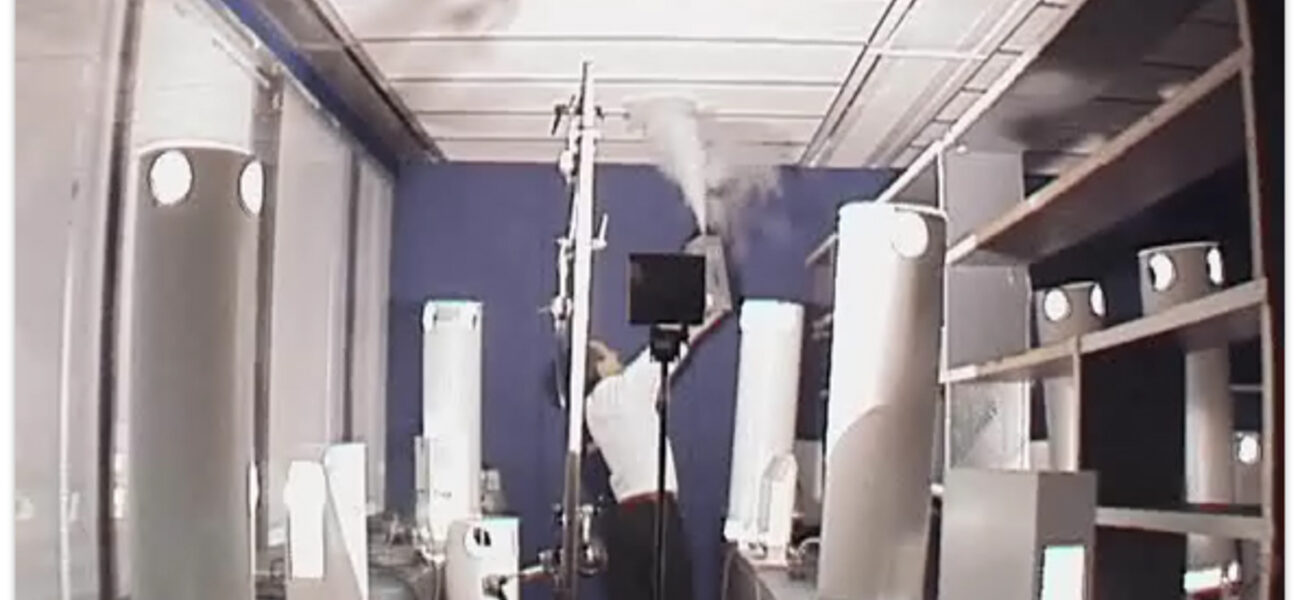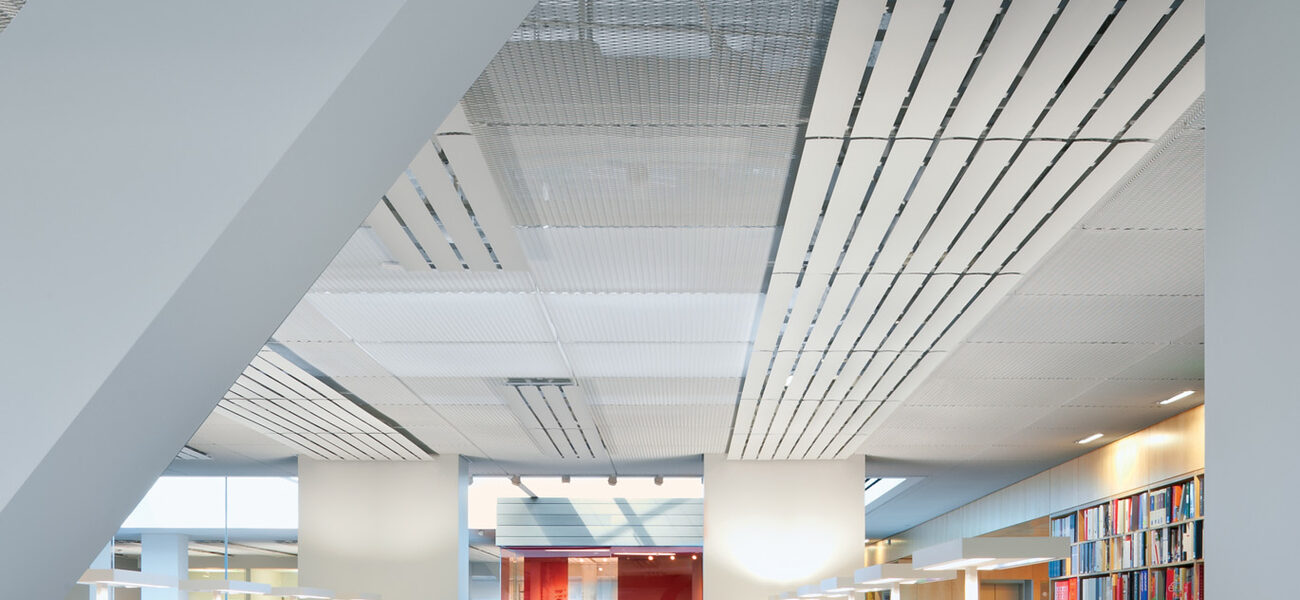New analytical planning tools and HVAC technologies can dramatically ease the transformation of existing academic buildings into high-performance state-of-the-art science labs. Along with advances in quantitative methods to assess the potential of existing space, innovations in HVAC strategy offer compact and energy-efficient solutions that are well suited to campus structures erected for different purposes decades ago.
Shrinking government funding, intensifying competition for researchers, and the growing desire to cut operations and energy costs are propelling colleges and universities to look at renovation in a new light, according to Steven Frei, principal, and Paul Erickson, sustainable practice leader, both with Affiliated Engineers, Inc.
In the past, repurposing has been hampered by many limitations. A major issue has been the lack of hard data to assess and compare the effectiveness of existing, new, and repurposed spaces. One metric gaining traction is to evaluate space in terms of research spending per square foot. Another thorny obstacle has been the traditionally low floor-to-floor heights in old buildings that allow scant room for lab infrastructure. The ability to laser-scan existing conditions in old concrete buildings—including the slope of an old floor or sag of a concrete deck—is critically important for the building information model.
“Recent lab buildings were typically designed with 15- to 16-foot floor-to-floor heights, while older facilities average 12 feet floor-to-floor,” says Frei. “When you merge all the necessary ductwork, piping, and electrical needs together in the smaller space, the result is very difficult to construct, maintain, or modify for future needs.”
Fortunately, Frei continues, “we now have the tools to get by with lower floor-to-floor heights, far more than we did five years ago.”
An additional benefit of the systems facilitating this accomplishment is improved energy efficiency.
“The types of systems we’re proposing really work well together in a tight, constrained project,” adds Erickson. “They meet the space criteria and deliver energy conservation in one fell swoop.”
Decoupling Ventilation from Cooling
In their search for renovation solutions, Frei and Erickson have worked with several new HVAC technologies that are well suited to older, shallower ceiling zones.
A guiding principal of the engineers’ approach is the decoupling of ventilation and cooling. Since each function has a different purpose—safety and comfort, respectively—when separated, they can be addressed more efficiently with different techniques.
“The traditional laboratory scheme entails using fans to move 55-degree air into the space to provide sufficient air changes for safety assurance, typically in the range of 10 to 12 per hour,” says Erickson. “That is purpose number one, and it is clearly the most important.”
However, recent findings have confirmed that in many situations such constant high air change rates aren’t necessary and may in fact be excessive, especially considering the ancillary need to temper the air for occupant comfort. Decoupling offers a means to deliver on the actual air quality while dynamically adjusting the more efficient comfort and/or load-driven cooling device to match current conditions. In many cases, just four to six air changes per hour can satisfy the need to clean and purge lab air.
In addition to dynamically adjusting the zone-level cooling device, there can be an opportunity to dynamically adjust the ventilation airflow rate necessary for maintaining a safe research environment. This dynamic airflow adjustment is made possible by sensing technology. The OptiNet product from Aircuity is one of the better-known systems, according to Frei. OptiNet is a centralized sensing system that uses high-tech hose (resin and carbon nanotubes) to convey samples of room air, drawn for 45 seconds, to a central set of sensors, which then evaluate the air for critical environmental parameters such as temperature, humidity, and particle levels.
While the system has just one set of sensors for as many as 15 rooms, they are of a much higher grade than those deployed at the room level. Centralized sensing not only reduces the maintenance and calibration demands associated with individual room sensors, but it provides a more intelligent response to existing conditions.
“If the air quality is better than anticipated, the system can scale back to perhaps four air changes per hour,” Frei says. “If it senses a high concentration of particulates, it could go up to 12, according to what the institution is comfortable with. The point is that the air change rates are no longer based on a pre-programmed arbitrary number, and energy use is much more efficient.”
Conditioning Air
Fewer air changes diminish the need to heat or cool supply air, which generates energy savings. Further data-gathering allows the extent of conditioning required to be determined more precisely. An important preparatory step is measuring the actual heat generated by existing equipment.
“Heat gain is often approximated by looking at what happens in similar buildings, but we find that lab planners tend to overestimate equipment load densities,” says Erickson. “Today we encourage both energy modeling and taking measurements of actual spaces. The results often show that tempering needs will be less than half of what had been anticipated.”
Lower cooling and heating requirements mean HVAC systems can be downsized to fit in tight ceiling spaces. Several new enabling technologies can be deployed to fill in the gaps, at reasonable cost.
When cooling is needed, chilled beams have proven economical from both a space and energy perspective.
“Water is far more effective at removing heat, and we can do it much more efficiently with less space than by using air,” states Erickson.
First adopted in Europe, where there is far less reliance on air-based systems, chilled beams are now attracting more widespread attention in the United States in this era of heightened energy consciousness.
“Many labs have a lot of heat from equipment, and chilled beams are that additional cooling device that avoids the need to install more ductwork to meet peak loads,” says Erickson.
A further appeal of chilled beams is their flexibility. Additional units can easily be connected to the existing network, and installation of an entire system can be delayed until later in the building’s lifespan as lab loads mature.
“From a capital perspective, you can save some money initially, knowing that if a particular room starts getting too warm, the next step would be to install the beams,” says Frei.
In office and dry research environments, chilled sails—which, like chilled beams, use water instead of air to provide cooling—are complementary to lower ceiling heights and can decrease AHU (air handling unit) requirements. They are similar to radiant cooling panels with tubing on the back to distribute chilled water. Again, using water rather than air produces an advantage for flexibility. It is more economical and less space-intensive to incorporate additional water piping capacity for anticipated conditioning increases than to oversize mains, shafts, and ductwork to serve future higher loads through an air-based system.
Phase change material, or PCM, provides a means of passive cooling. A non-toxic, bio-based gel encased in small squares of plastic installed in walls and ceilings, PCM absorbs the thermal energy that would otherwise heat a room. With natural evening cooling, the material freezes, thus helping to dampen temperature swings and keep the space more comfortable.
“PCM is not so much about energy but to handle peak loads,” explains Erickson. “Just that little bit of extra capacity can make a difference, so the building doesn’t need a larger or perhaps less efficient type of cooling system.”
Technology Trends in the Lab
In the lab, proper fume hood management can also lower the ventilation load. This can have an appreciable impact on shaft space and penthouse and plant requirements, from air handling units and chillers to the boiler.
Fume hoods should be open only when in use, but that is not always standard practice. On several recent projects Affiliated Engineers has recommend deploying hoods with an automated sash activated by a built-in sensor as a way to follow a consistent sash-closing policy.
“We can’t assume that sashes will be closed, but working with a device that assures closing allows us to be more aggressive with the design,” says Erickson.
Ductless fume hoods, which also economize on ductwork and ceiling height, are appropriate where the specific chemicals to be filtered out are known in advance. They are relatively new, arriving on the market only about five years ago, but growing in popularity.
“Ductless hoods are like biosafety cabinets with a rigorous filtration system tuned to a specific chemistry, which is just the type of situation in many teaching labs,” he explains. “When ventilation is no longer driven by the hood, the ductwork can get smaller, and the energy needed for preconditioning the outside air load is reduced.”
While they don’t provide savings in ductwork, overhead space, or shafts, modular heat recovery chillers can also be deployed as part of a decoupling strategy in labs with multiple fume hoods or in linear equipment rooms. The heat recovery chillers are not sized to cover the peak chilled or hot water demand. Rather, the intent is to perform at a lower level, handling the simultaneous heating and cooling load that occurs throughout the year.
“You get incredible performance for that simultaneous load, creating warm and chilled water at a much better efficiency than typical chillers,” Erickson says. “It may be the difference between having to add more capacity in a building, or even at the plant level.”
Pendant Lights
The use of pendant lights is a continuing and growing trend. Initial concerns about the extra effort needed to dust and clean pendant fixtures have proved to be inconsequential, and they are thus increasingly replacing the old standard, recessed lighting.
In addition to taking up less overhead space, pendants produce a higher quality illumination than recessed lights. With the pendant fixtures consuming fewer watts per square foot, the energy efficiency is also notable.
“Clearly, for many reasons, pendant lights are the right fixture to be looking at, and most of our projects go that direction today,” says Frei.
Smaller and More Sustainable
Both Frei and Erickson emphasize that the assortment of enabling technologies can be applied in new construction as well.
“They are not unique to repurposing,” says Frei. “They are enablers, a means to shrink systems so they fit into existing space or take up less space and use less energy in buildings on the drawing board. It’s all part of the effort we make as engineers to design smaller, more efficient pieces and parts.”
Not to be overlooked is the sustainability inherent in repurposing, an important value on today’s campuses that are developing climate action plans to reduce their carbon footprint while striving to maintain the identity and heritage that many older buildings represent.
“An added bonus of renovation is making use of the energy and materials that originally went into constructing the building,” says Erickson. “On a recent project, salvaging the structure offset the energy consumption for about the first year and a half of operation. It is a great story.”
By Nicole Zaro Stahl
This report was based on a presentation Frei and Erickson made at Tradeline’s 2012 College and University Science Centers conference.
| Organization |
|---|
|
Hickling & Associates
|

